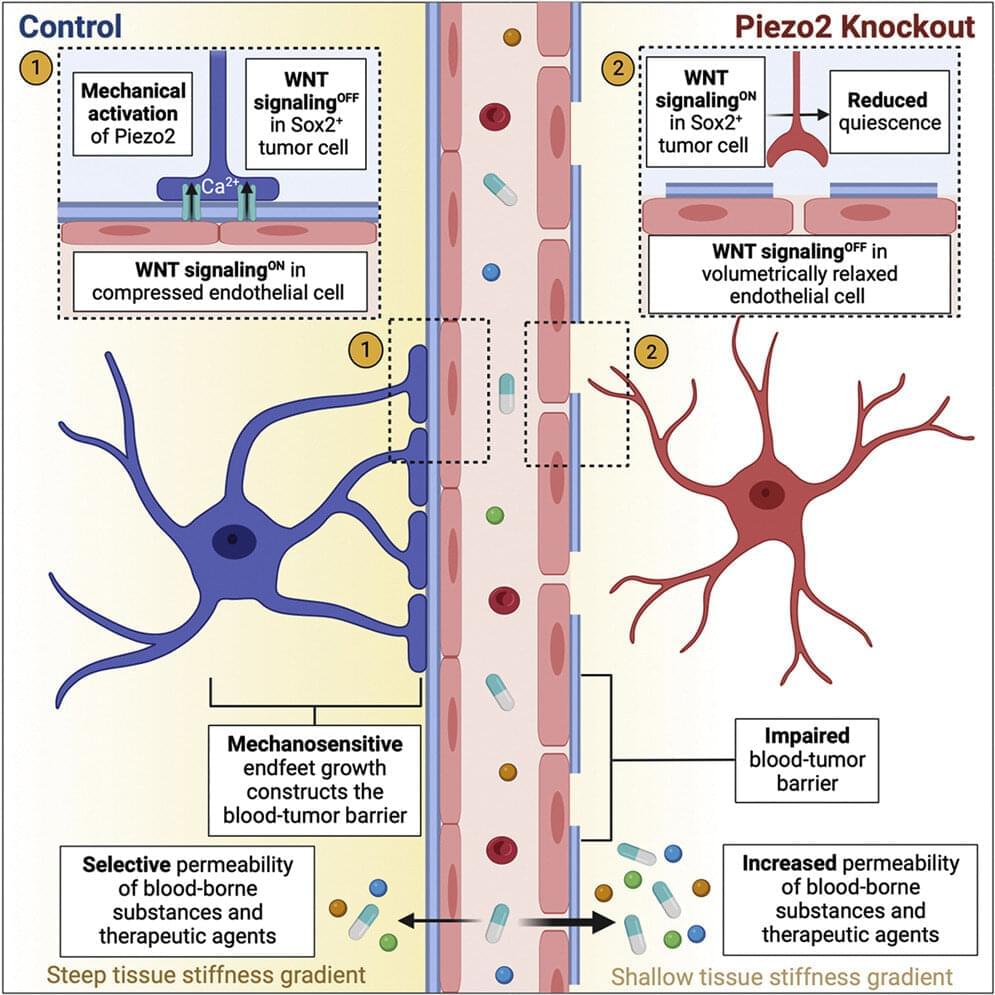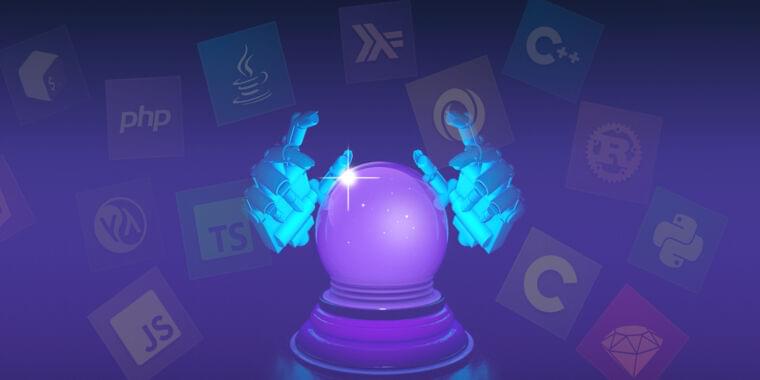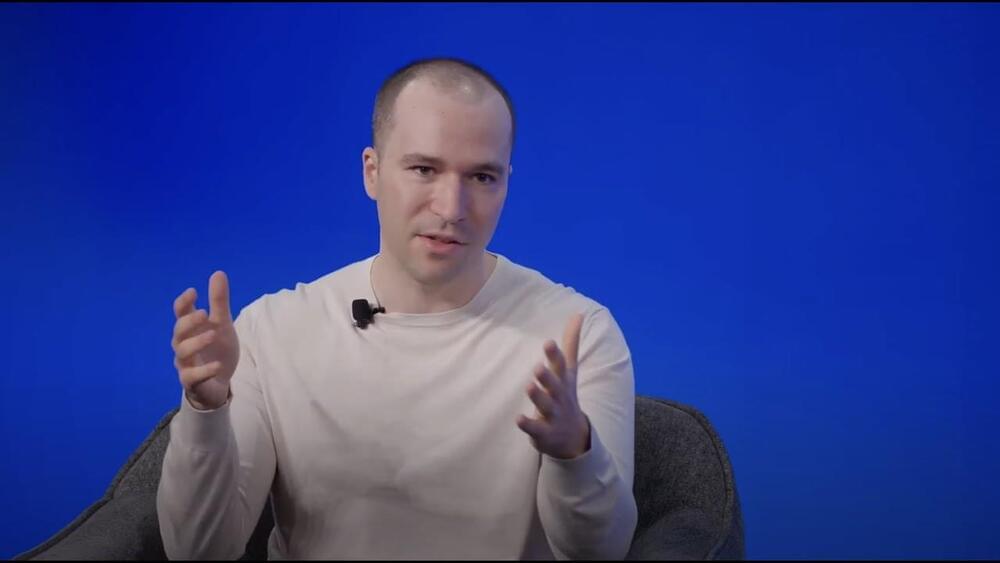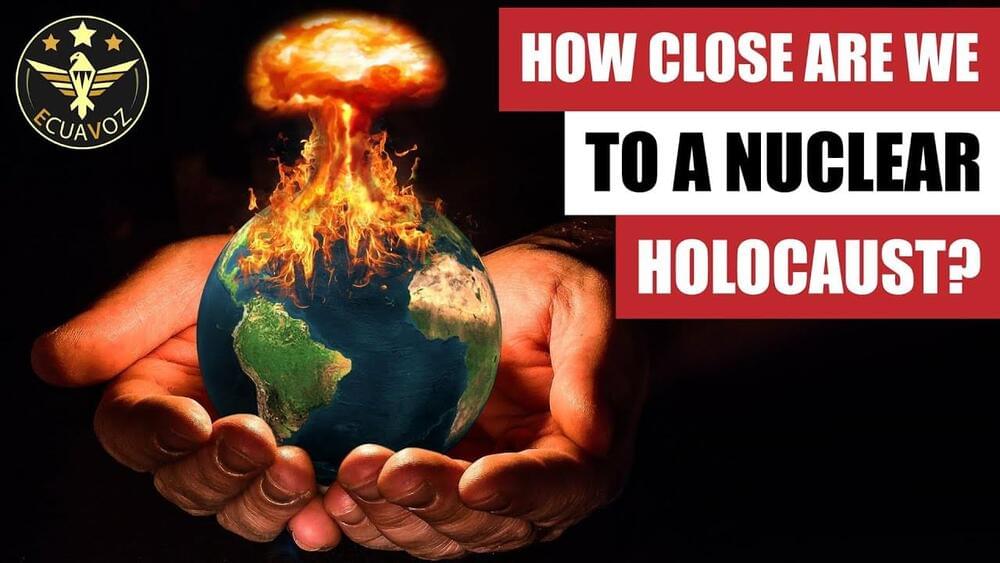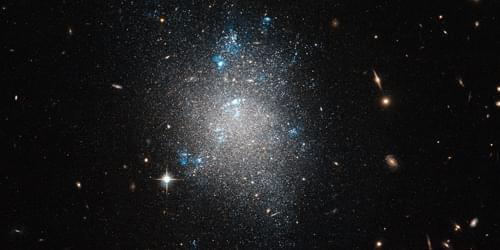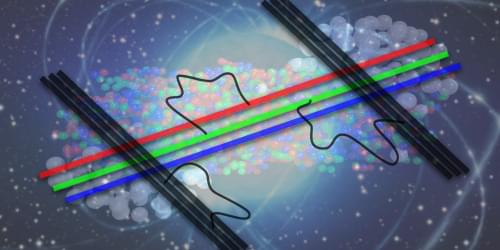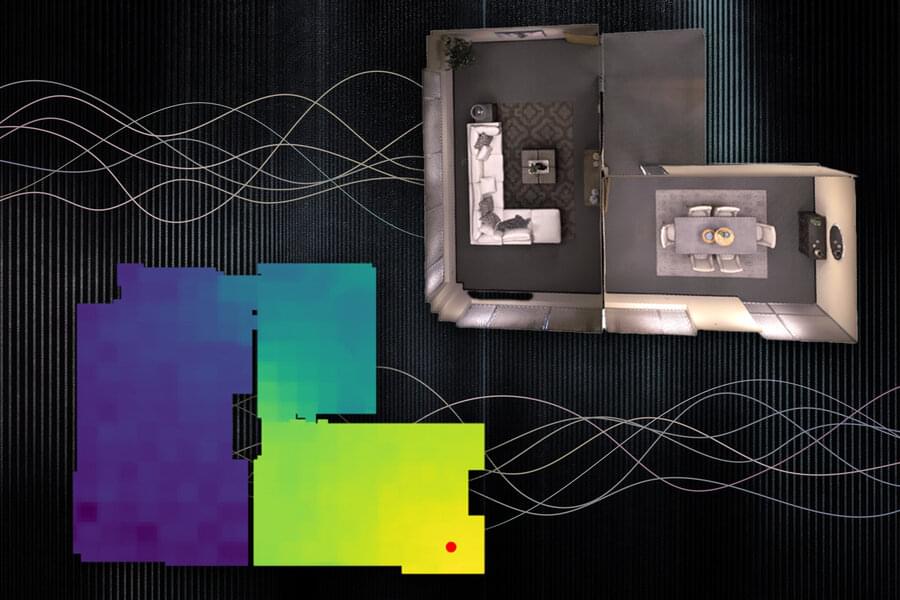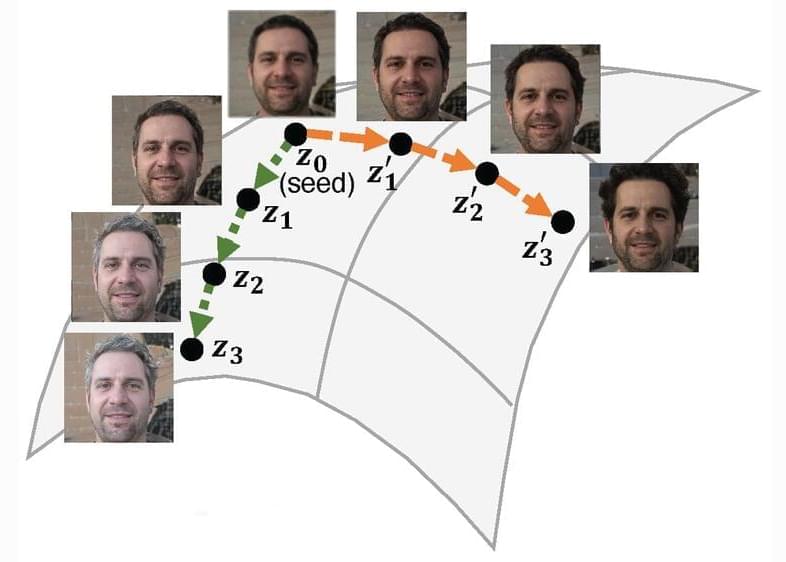Nov 2, 2022
New research rethinks the blood-tumor barrier and identifies novel path to brain cancer treatment
Posted by Genevieve Klien in categories: biotech/medical, neuroscience
In a new study, scientists have uncovered the mechanics of the blood-tumor barrier, one of the most significant obstacles to improving treatment efficacy and preventing the return of cancerous cells. The research team, led by Dr. Xi Huang, a Senior Scientist in Developmental & Stem Cell Biology program at The Hospital for Sick Children (SickKids), lays the foundation for more effectively treating medulloblastoma, the most common malignant pediatric brain tumor.
“Despite decades of research on brain cancer, the mechanisms that govern the formation and function of the blood-tumor barrier have remained poorly understood,” says Huang, who is also a Principal Investigator at the Arthur and Sonia Labatt Brain Tumor Research Center and Canada Research Chair in Cancer Biophysics. “Our discoveries represent a breakthrough in the understanding of how the blood-tumor barrier forms and works.”
In a paper published today in Neuron, the research team identifies a way to reduce the impact of the blood-tumor barrier on medulloblastoma treatment.
